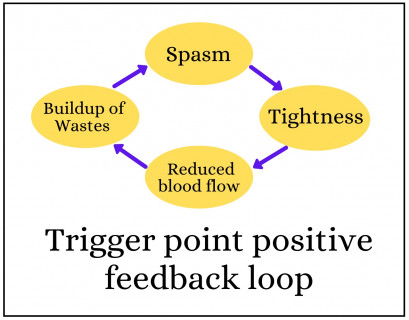The effects of trigger points on sports performance and injuries
Altered timing
It is shown that trigger points can delay the reaction time of muscles by about one tenth of a second. This will not only alter speed and timing, but the movements required for sports require timing for coordination. This altered timing will effect accuracy, coordination, biomechanical efficiency and may even predispose to injury.
Pain
Although trigger points commonly only hurt when a therapist presses upon them, when they do cause pain they are responsible for a great number of musculoskeletal pain syndromes.
Other effects
Trigger points cause muscle to become tight, restrict their blood blood flow, and inhibit them from functioning normally. This adversely effects posture and biomechanics. Even without referring pain, trigger points will do the following (2-4). For more information please see our article Trigger point basics It is important to note that trigger points do this, even when not causing pain.
- restrict ranges of motion
- create tightness which can cause injury
- cause muscle weakness
- cause muscle fatigue
- alter muscle activations (alter neurological control of movement)
- induce muscle cramps, and
- affect posture and joint function, creating further issues.







